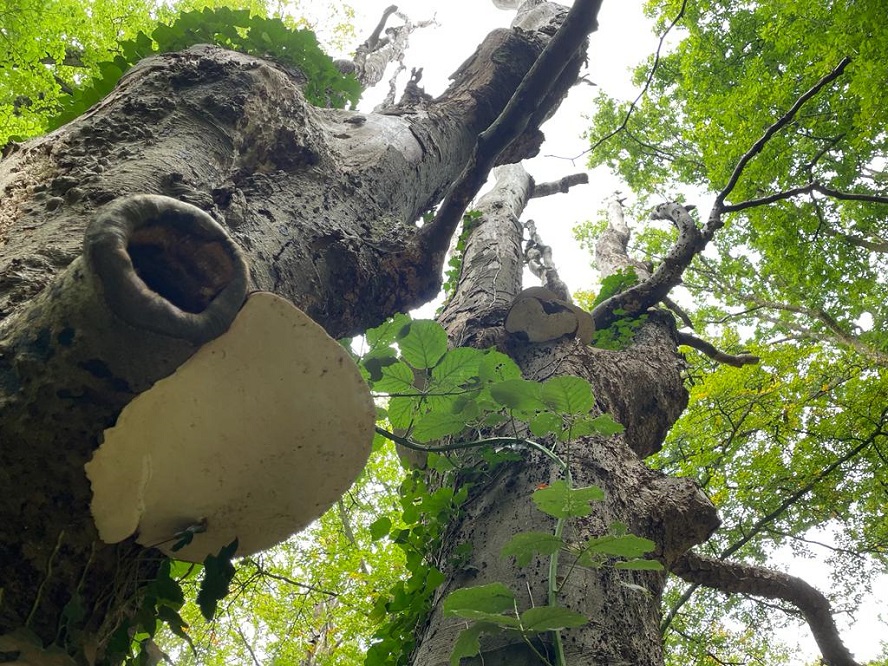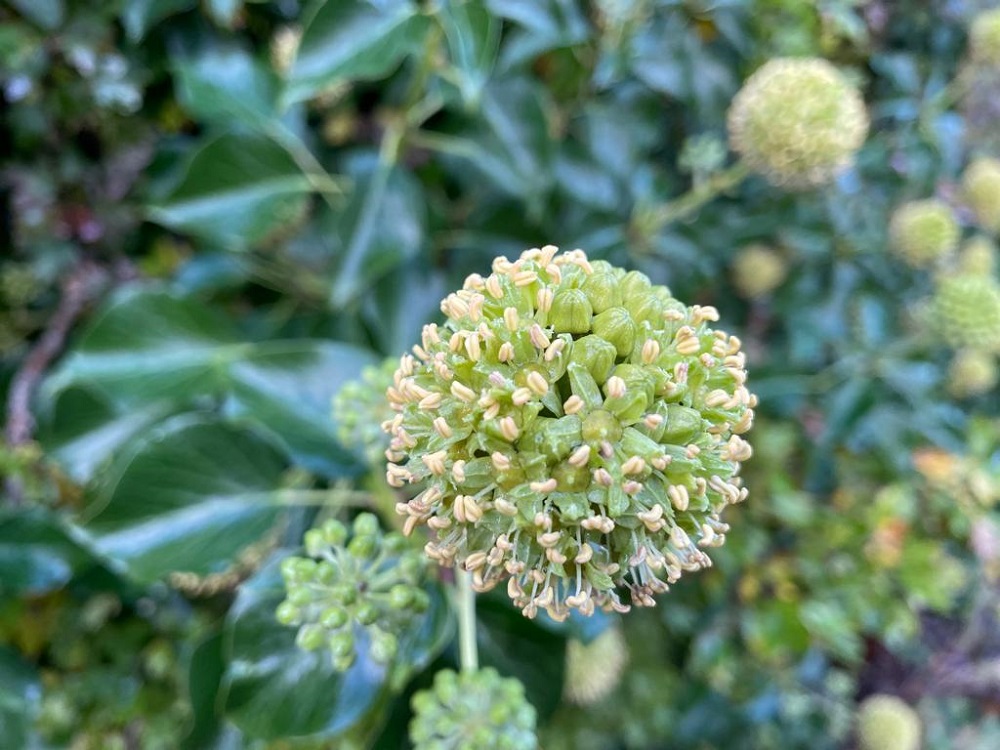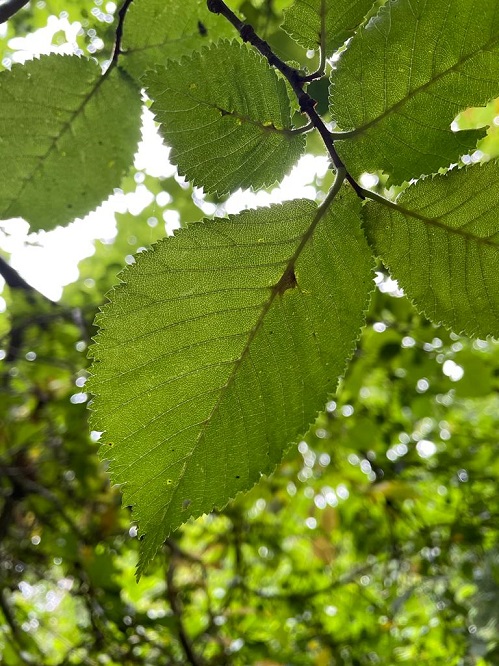Tawny Clark goes into the woods

Tawny Clark
Congested with cold and anchored down by the weight of the world, a cheeky adolescent is the last thing I need today.
But my four-legged friend gazes forlornly at the window, then back at me. With a long, drawn-out sigh, I reach for my boots. Damn those puppy-dog eyes!
I don’t feel it immediately, pre-occupied as I am with the responsibilities of dog ownership. Dodging dollops of every shape and size, whilst dutifully trudging back to the bright red bin.
Attention then turns to important pursuits. The ball must be thrown, repeatedly. Her focus is sharp, forcing me to follow and throw with practiced obedience. The perfunctory rhythm, a train on a track, follow and throw, follow and throw. Endless miles of tunnel-vision.
She has me well trained.
But something changes.
An intriguing smell catches her attention and affords me a momentary break from my occupation. It’s just enough.
Stand tall
As she sniffs, I stand tall; noticing for the first time the world we have unconsciously stumbled upon. It smacks the pit of my stomach like a barrelling wave of sunshine.
Beech forest fills my ears, my eyes.
Pale, elephant trunks strain upwards to a sky hidden beyond a veil of mouth-watering green.
Whilst life lingers above, last year’s leaf-fall adds a humus-rich base to the wonderous scene before me. A crisp, earthiness fills my nostrils and roots me to the ground, as I feel the forest silently wrap its benevolent limbs around me.
I’ve unintentionally captured a precious moment. A woodland teetering on the event horizon of autumn.
Tension sizzles as trees hold the last breaths of summer and prepare to sigh off their heavy burdens.
This year has been testing. They’re ready to rest.

Arboreal titans
The commanding grandeur of these arboreal titans is overwhelming – especially being caught so off-guard. Everything within me has yet to adjust to this zero-plastic, technology-free world. Eyes must acclimatise to twists and curves.
Gone are the right-angles, the interminable paint-dashed tarmac, and toe-stubbing concrete curbs. There seems no choice but to pause and reflect.
Floating forwards, deeper into the forest, my mind begins to recalibrate.
Set apart from the (increasingly irregular) regularity of the changing seasons, the woodland brings an altogether different dimension to our own concept of time. From invertebrates that complete entire lifecycles in the space of a day to practically immortal lichens.
A wanderer may need to set aside their human-schedule in order to fully recharge. It takes as long as it takes. What is time to centuries-old oaks that stand cragged but determined? Or millennia-wearied yews that tell of a distant land once worshiped not ‘owned’.
I stand solemnly before a towering monolith of deadwood. A monument to a lifetime spent in service to the forest. A service which continues long after death.
Foamy, bracket fungi burst from its hollow body. Woodpecker holes adorn its trunk, like a forest flute, and a robin sings from an unclothed branch.
A few moments of silent meditation seem fitting. My face turns upwards towards the clear, open sky where the canopy has broken – the sunlight, helping me absorb all that’s occurred in the last weeks.

Fallen giant
A short distance along the path is a tragic, fallen giant. The lifeblood of the forest, this magnificent beech’s supine body is a stark reminder of the brutality of last winter’s storms.
Beech saplings race to fill the bright space. For them, there is no pause for quiet contemplation, for grief. Evolution is relentless. Survival of the fittest. They must fight to out-compete those around them. The desperate, compassionless tussle playing out imperceptibly to all who hurry by.
There are frequent crashes amid the canopy. I wrongly assume the woods are awash with raucous squirrels, hastily gathering supplies for winter larders. But, as my ears tune into the accompanying ‘thunks’ on the forest floor, I realise this is an arboreal assault of another kind.
With this year’s super-sized acorns, capable of supplying a nasty thwack on an un-capped head, it’s an aerial strike to be wary of if you’re taking a stroll in the woods this month.
Just like conkers, they mysteriously find their way into pockets. We too are creatures with a propensity to squirrel away the precious trinkets of nature.
Walking alongside a stream, I’m treated to several resounding ‘plops’ as rotund acorns splash repeatedly into the water. The hound is thoroughly confused, but my chuckles do little to satisfy her baffled glances.

Autumn nectar
A rising hum, like a distant racetrack, becomes the drone of bees in ivy flowers – a critical food source for pollinators at this time of year. Inconspicuous clusters are ripening into frothy spheres of autumn nectar. It’s heartening to hear the merry buzz of these banquets in so many of the surrounding trees.
Having paused to enjoy the bees, I notice a tree I never think to look for – elm. Practically wiped from our landscape by the introduction of Dutch Elm disease in the 1960’s, the elm’s tough, rot-resistant wood was once a mainstay of industry, used for everything from pulleys and shafts to waterwheels and ships keels.
Superficially, resembling hazel, it’s all too easy to overlook. But now, the asymmetrical leaves seem embarrassingly obvious. Nerve-endings fizz at my fingertips as a leaf passes scratchily between fingers and thumb.
Often described as fine sandpaper, the leaf’s texture reminds me of Velcro (itself inspired by seed-burrs like those I’ll be pulling from dog fur for the rest of the day!). The upper-side feels hook-rough, the underside fuzzy. Tiny hairs that tickle and delight.

New life
Historically, elm was associated with death and melancholy, and commonly used for coffins. It’s unnerving, symbolic almost, to discover it during the week of The Queen’s funeral, when I’m thinking of loved ones lost and reflecting on uncertain times ahead.
Stepping back to continue along the path, I notice several elm saplings – growing inconspicuously among the hazels and beeches, poking through gaps in bramble and nettle, evading the smother of bindweed.
It’s encouraging to find so much new life springing up around the woodland and seeing how quickly nature adapts to change.
It finds a way to move forward.
Trees may not hold all the answers, but however heavy a burden I take with me into the forest, I seem always to leave with a renewed sense of lightness, of hope…and a pocketful of acorns.
Support our Nation today
For the price of a cup of coffee a month you can help us create an independent, not-for-profit, national news service for the people of Wales, by the people of Wales.





Thank you for bringing us back to The Woods.
Forget acorns, they belong to the jays and squirrels, conkers too. Seek out the sweet chestnuts and share them with the mice…